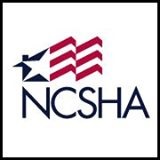WASHINGTON, D.C. – (RealEstateRama) — On November 16, HUD published in the Federal Register a final rule regarding the use of small area fair market rents (SAFMR) in certain metropolitan areas, and replacing HUD’s existing 50th percentile fair market rent (FMR) policy for the Housing Choice Voucher (voucher) program. SAFMRs reflect rent standards in zip code areas while traditional FMRs reflect a single rent standard for an entire metropolitan region. According to HUD, 50th percentile FMRs—the current policy for addressing high voucher concentration – have been largely ineffective. HUD expects that SAFMRs will better address high levels of voucher concentration in certain communities and give voucher holders access to areas of high opportunity by providing a subsidy that is adequate to cover rents in those areas.

HUD initially proposed moving to a SAFMR in the spring of 2016. NCSHA submitted comments in strong support of the goals articulated in the proposed rule, including expanding housing choice and access to high-opportunity neighborhoods for voucher holders, but expressed concern over unintended consequences that could negatively impact some voucher holders, particularly those in high-cost metropolitan areas with low vacancy rates, and create problems for developments that rely on rental assistance from Project-Based Vouchers (PBV). NCSHA also suggested that HUD may be underestimating the administrative burden public housing authorities (PHAs), including state HFAs, will incur if required to implement SAFMRs.
The final rule applies Small Area FMRs to metropolitan areas where: (1) there are at least 2,500 vouchers under lease; (2) at least 20 percent of the standard quality rental stock within the metropolitan FMR area is in ZIP codes where the Small Area FMR is more than 110 percent of the metropolitan FMR; (3) the percentage of voucher families living in concentrated low income areas relative to all renters within the area is at least 25 percent; and (4) the measure of the percentage of voucher holders living in concentrated low income areas relative to all renters within these areas over the entire metropolitan area exceeds 155 percent (or 1.55). HUD also addressed concerns posed by NCSHA and others about using SAFMRs in low vacancy areas by exempting areas with vacancy rates of 4 percent or less.
The final rule also includes several new protections NCSHA and others recommended. First, the final rule now provides PHAs the option to hold families under a housing assistance payment (HAP) contract harmless from payment standard reductions that are currently required at the family’s second annual recertification if the family’s payment standard falls outside of the basic range as the result of a decrease in FMRs. This provision is consistent with the Housing Opportunity Through Modernization Act (HOTMA). The final rule also provides flexibility in payment standard reductions so that should a PHA choose not to hold households at the current payment level, the PHA can set payment standards at any amount between the current payment standard and the new normally applicable amount. The rule extends this flexibility to payment standard decreases even when they are not the result of an FMR decrease. In order to ease the transition to SAFMRs, the final rule also limits the annual decrease in SAFMRs to no more than 10 percent of the area’s FMR in the prior fiscal year.
NCSHA commented to HUD on the proposed use of SAFMRs in PBV projects, urging the agency to ensure that changes to payment standards do not have a negative impact on existing developments that rely on rental assistance from PBVs or future developments currently in the development pipeline. HUD responded to these and other comments by choosing to exempt all current and future PBVs from SAFMRs at this time. The final rule says though that if a PHA is operating SAFMRs for its tenant-based program, it may apply SAFMRs to all future PBVs if it establishes a policy in its PHA administrative plan. In this case, the PHA may also choose to establish a policy that allows it to apply SAFMRs to current PBV projects, provided the owner is willing. According to the final rule, the PHA and project owner cannot subsequently revert back to traditional FMRs. HUD concludes this section of the final rule by stated it will closely monitor the results of this policy including for any fair housing or civil rights concerns.
HUD also incorporated three policy provisions in the final rule designed to reduce PHAs’ administrative burden. First, it provides PHAs with up to three months from the date when new FMRs go into effect in which to update their payment standards if a change is necessary to fall within the basic range of new FMRs. Second, it amends the FMR decrease percentage triggering an automatic rent reasonableness review of their entire voucher portfolio to 10 percent for all PHAs. Previously, the standard that triggered the rent reasonableness review was a 5 percent decrease. And finally, the rule provides PHAs not operating in SAFMR designated areas the ability to establish Exception Payment Standards for a zip code area of up to 110 percent of the relevant Small Area FMR by notifying HUD.
The final rule also implements HOTMA provisions that allow any PHA, not just those in SAFMR areas, to establish, without seeking HUD approval, an exception payment standard of up to 120 percent of the FMR if required as a reasonable accommodation for a household that includes a person with a disability. A PHA may establish an exception payment standard greater than 120 percent of the FMR if required as a reasonable accommodation with HUD approval.
Metropolitan areaswith FMRs set at the 50th percentile rent will transition to either the 40th percentile rent at the expiration of the 3-year period for the 50th percentile rent, or will be designated a Small Area FMR area in accordance with the criteria discussed earlier. As of the final rule’s publication, there are 24 areas listed that meet these criteria. These areas contain approximately 18 percent of the voucher households nationwide. PHAs that are not required to use SAFMRs may opt in by seeking approval of HUD’s Office of Public and Indian Housing through written request.
HUD announced that it expects to issue implementation guidance in Fiscal Year (FY) 2017 to support SAFMR implementation. HUD also plans to produce webinars in FY 2017 to share lessons learned and best practices from PHAs that have already implemented SAFMRs.
For more information, please contact NCSHA’s ">Althea Arnold.











